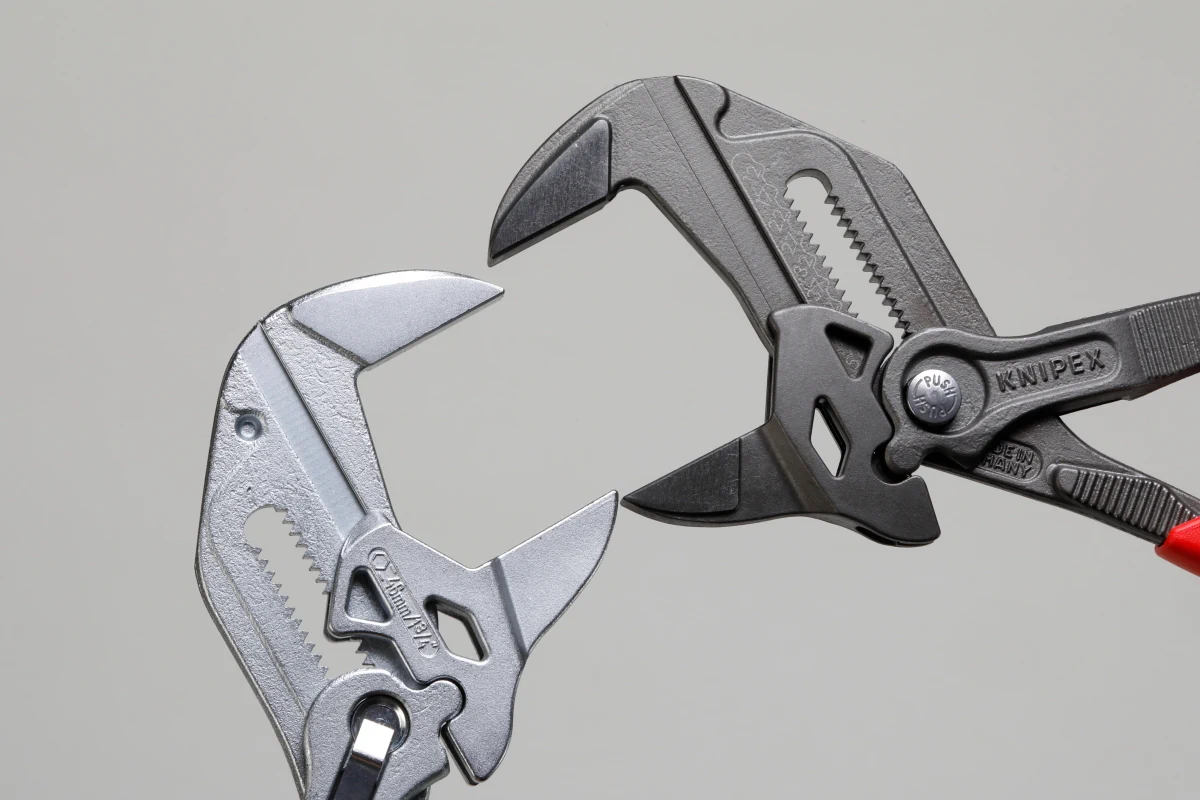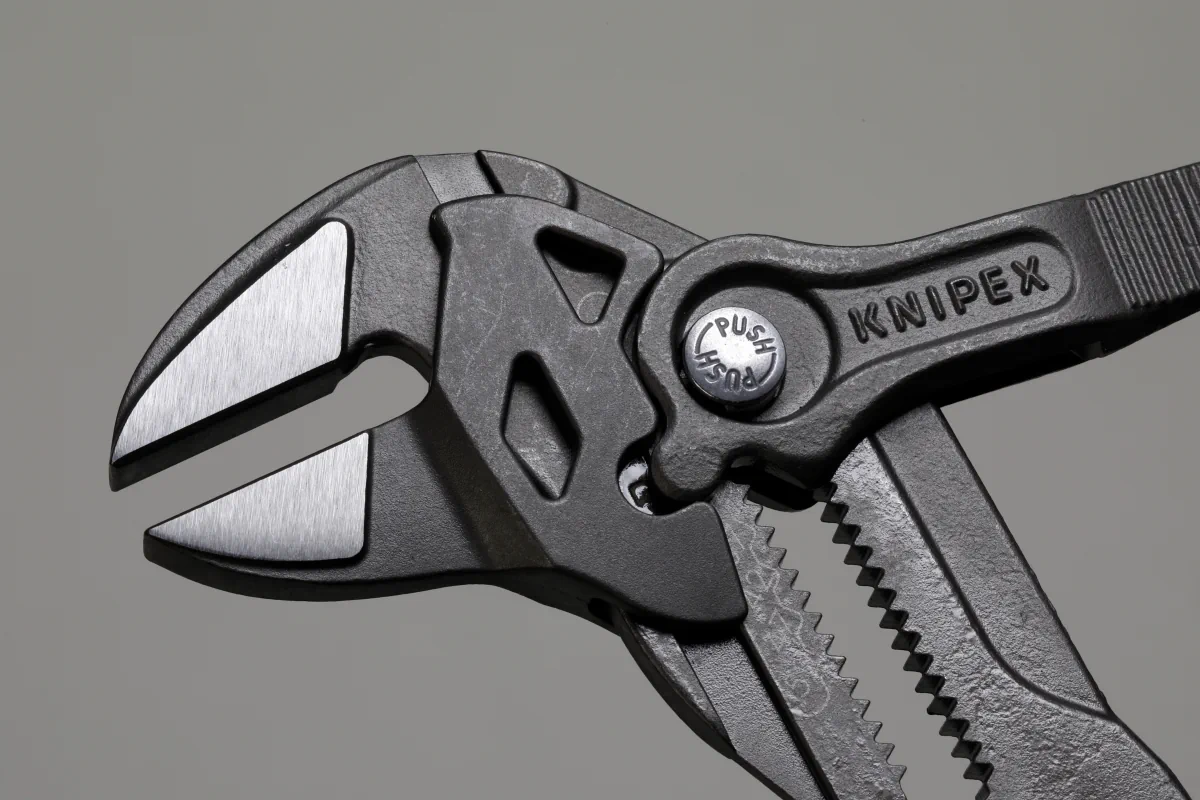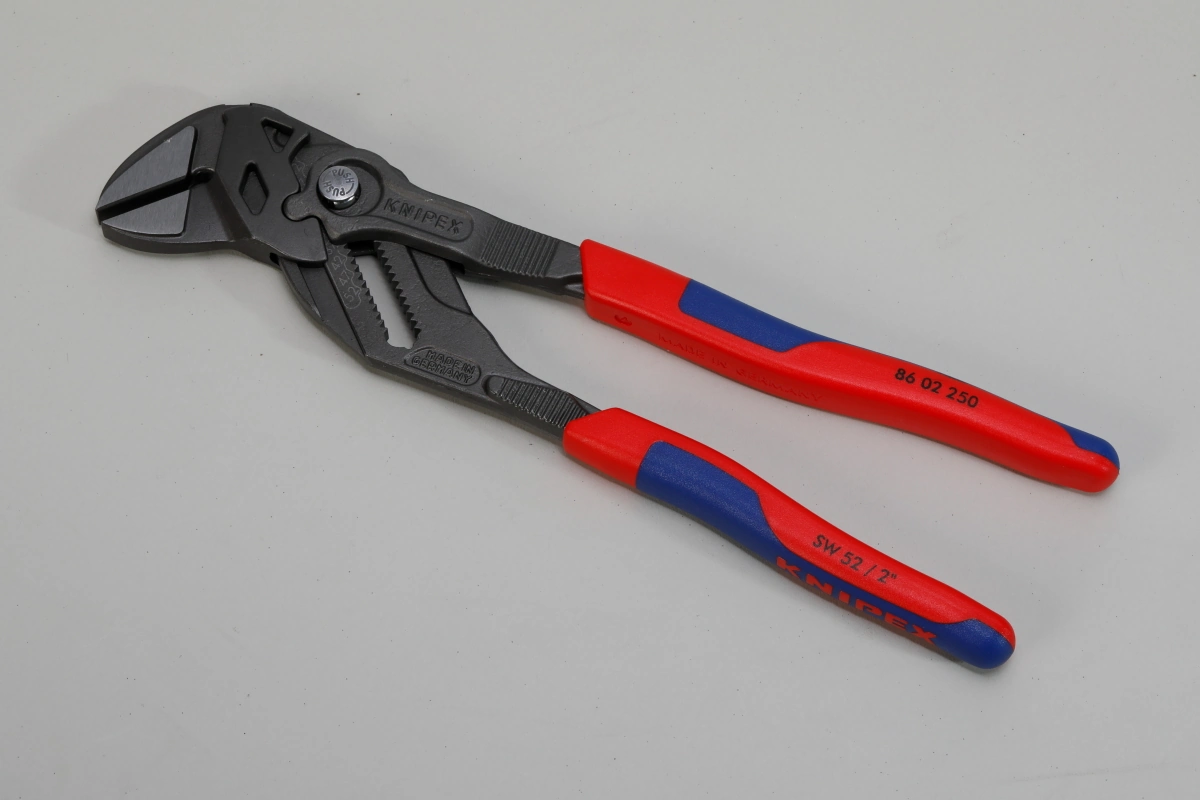It is a common maintenance practice to use eyeglass wrenches and socket wrenches in preference when turning bolts and nuts and to avoid using wrenches and monkey wrenches as much as possible. However, the plier wrench made by Knipex can turn bolts and nuts without any problem, even though it looks like a water pump.
We would like to introduce the versatility hidden in this wrench.
- Pliers wrench with a unique joint structure that opens and closes the jaws in parallel.
- Zero rattling of two face widths that cannot be avoided with a wrench or monkey wrench.
Pliers wrench with a unique joint structure that opens and closes the jaws in parallel.


The unique joint and cam structure of the pliers’ wrench allows the jaws to open wide while maintaining parallelism. Both wrenches are 250 mm in length, but the left one opens to 46 mm and the right one to 52 mm. Rear axle nuts with two side widths such as 23mm and 27mm can also be afforded.
Knipex, a German tool manufacturer, is a long-established company with a nearly 150-year history specializing in gripping tools such as pliers, nippers, and pliers. The company’s products are highly regarded by professionals around the world, and the plier wrench, which was introduced in the 1990s, is such a revolutionary product that it can be called an invention.
Pliers are more like tools for bending and pulling wires and wiring, or gripping hose clamps, rather than for turning bolts and nuts. On the other hand, water pump pliers, which have a large opening with a sliding jaw joint, are often used for plumbing and plumbing work, but in motorcycle maintenance, they are more like a sub-tool for picking up and holding parts in hard-to-reach places and grabbing hose clamps in the same way as pliers. They seem to be more of a sub-tool.
In contrast, the plier wrench has the features and capabilities to play a leading role in a number of situations. The first feature is the ability to open and close the jaws in parallel, which is unusual for a gripping tool. The jaws of nippers, pliers, and water pump pliers open and close in a circular motion around a hinge or joint. In contrast, plier wrenches open and close with their jaws facing each other in a parallel motion like a monkey wrench.
Zero rattling of two face widths that cannot be avoided with a wrench or monkey wrench.


One grip (handle) and jaw are divided into two pieces. When the grip is held (closed), the cam pushes the jaw in the closing direction to strongly grip the opponent. The force applied to the grip is amplified tenfold by the principle of leverage, making it difficult to open the gripping surface when turning a bolt or nut and making it difficult to pinch.


Pliers wrench with comfort grip specification for easy gripping. The overall length is 250 mm and the maximum opening width is 52 mm. The width can be adjusted by pressing a button on the joint part, and once set, the joint position does not shift even if the grip is opened and closed widely, which is the difference from general water pump pliers.
The parallel movement of the jaws allows pliers wrenches to grip bolts and nuts two widths apart in parallel, but that is not the only feature. It is to reduce damage to the bolt or nut that the spectacle or socket wrench should be used in preference when turning a bolt or nut, and the wrench or monkey wrench should be limited to unavoidable situations. Spanners and monkey wrenches make contact with the bolt and nut at two points, while eyeglasses and sockets make contact at six points, so when the tool is turned with the same torque, the force applied to the contact point with the bolt and nut is three times greater, making it easier to lick.
Conversely, the risk of damaging the bolt and nut is reduced to one-third by using a spectacle wrench. Both the wrench and the monkey wrench seem to pinch the opposite sides of the bolt and nut parallel to each other, but this is actually not the case. If the inside width of the wrench is exactly the same as that of the hexagonal head, the contact area will be a solid contact, but this does not allow the wrench to be set, so a small gap is necessary. However, this gap makes the only contact points between the two parts to be the two corners of the hexagonal head.
However, the clearance between the gear and the jaw causes rattling, resulting in a two-point contact as with the wrench (some monkey wrenches have a mechanism to reduce this rattling). (Some monkey wrenches have a mechanism to reduce this rattle.)
In contrast to them, the Kunipex Pliers Wrench has a unique joint structure that allows the jaws to move in parallel, and by holding the grip, the wrench clamps the two widths of the bolt nut while maintaining the parallel state. Therefore, the more force is applied, the more closely the jaws adhere to the bolt nut. When loosening a tight bolt nut, the wrench hits the bolt nut when the torque reaches its maximum, and the risk of damaging the corner of the bolt nut is reduced by not applying force with pinpoint accuracy.